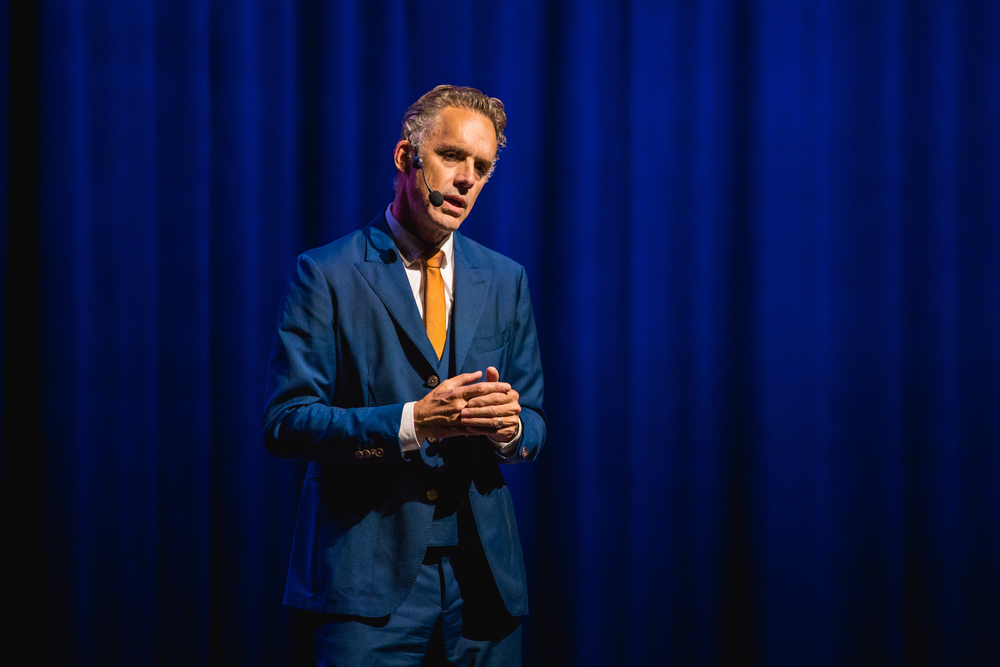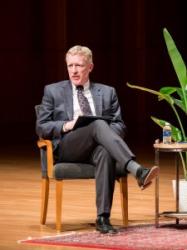Jordan Peterson, the bête noire of the left, resigned his position at the University of Toronto in enviable fashion: on his own terms while issuing a blistering condemnation of the ideological corruption of the academy. Peterson’s critics have responded in predictable fashion, by ignoring his arguments and accusing him of throwing a tantrum, telling outrageous lies, and displaying the “usual smugness” by which he tries to compensate for being “completely incorrect.”
Those who have paid attention to Peterson in the past five years, particularly since the incendiary interview he gave with Channel 4 News in England that vaulted him to fame, understand the hatred he generates. Rewatching that video indicates just how “incorrect” Peterson is, particularly when it comes to issues of the constitution of manhood, the nature of hierarchies, and the quest for meaning. His main sins, however, have been his fearlessness in the face of attacks and his unwillingness to say things he doesn’t believe are true, and these characteristics drive his critics to distraction because they expose the ideological powers that have captured our campuses. It should be remembered that Peterson’s moral imagination was shaped by his reading of Solzhenitsyn’s work, specifically its diagnosis of ideology and its capacity to get people to live by lies.
This observation, however, in a way begs the question because it assumes Peterson’s accuracy in his criticisms, and any fair judgment of Peterson’s resignation letter must put his claims in the balance. As an academic myself, I can assess his claims both experientially (have I observed the same things?) and in terms of the broader social science. The online journal Inside Higher Education (IHE), one of the two main sources for information in the academy, covered Peterson’s retirement by, predictably, interviewing the people Peterson called out in his resignation essay who, not surprisingly, disputed his charges. Peterson, however, has not been the only social scientist to criticize their work, specifically their “studies” on implicit biases (and their Implicit Association Test).
The main object of Peterson’s criticisms are campus Diversity, Equity, and Inclusion (DEI) offices, their reliance on tools such as implicit bias tests and trainings, and their imperious overreach into other campus processes such as hiring faculty. In particular, Peterson scoffed at the assumption that faculty will allow hidden biases to skew the hiring process in favor of white males unless those biases can be made explicit. (And I assure the reader, having sat in on many searches, that all the explicit standards are overwhelmingly not in the favor of white males.) These implicit biases, in turn, require the intervention of professionals who will properly “train” faculty and staff to acknowledge their biases and hire accordingly. Whether the training is meant to purge us of our biases or replace them with “correct” ones is a moot question. The more important question involves demonstrating a strong link between hidden biases and discriminatory hiring practices, which in turn would require that we ask the vexing question of what measures we might use to prove that discrimination has occurred.
Social science aspires to two fundamental standards: validity and reliability. The former asks whether you’re actually examining the thing you say you are, while the latter wants to know if the results are consistent across multiple tests. (For example, a scale that is 10 pounds off may be reliable but not valid.) Complete consistency receives a score of 1, while a score of 0 means no consistency. Social scientists typically have a .8 minimum threshold for reliability scores.
Part of the problem involves the ways in which we use measurements, because all too often the method or tool of measurement creates the thing being measured, thus rendering the entire process tautological: an implicit bias is that which is measured by the Implicit Association Test (IAT), and the IAT is that which measures implicit biases; in other words, it is creating the thing it’s looking for. There is no way to get at the thing being measured other than the method employed, which means that we can never know if the measuring device is doing what it claims to do. One way forward might be to look at test-retest reliability, and at this the IAT fails miserably. Not coming anywhere close to the .8 threshold, the test often comes in somewhere between .2 and .4. And this is not even taking into consideration the ways in which people can game the test, incentivized as they are by the fact they don’t want to be thought of as having bad biases.
The IAT has the further problem of not showing any positive effect in preventing discriminatory behavior. Moreover, I’ve yet to read any serious account as to what such discrimination might actually look like. The general assumption that racial disparities are evidence of racial discrimination is a remarkably weak one. Like the IAT itself, this assumption makes the mistake of looking at only one variable, which in social science is typically a no-no. And neither is any effort made to connect biases to experience. “Don’t take candy from a stranger” is a bias, but it’s a reasonable one.
Furthermore, the training sessions based on IAT results demonstrate no positive effects either on subsequent takings of the test or on post-test conduct. In fact, some studies have argued that the training produces a negative “backlash” effect that may actually lessen commitment to diversity initiatives. It may also trigger stereotypes. One white college professor I know was told that she was “25% black” because she didn’t get upset about being late to things and 25% Asian because she valued her own family to others. Whatever positive effects there are dissipate quickly, and the result is that training sessions end up being little more than preaching to the choir. Countless time and money is wasted annually on these initiatives.
IHE, in its report on Peterson’s retirement, could have drawn attention to the abundant literature that disclaims the IAT and shows the problems with diversity training. Instead, they interviewed the test’s creators, who have a vested interest in protecting their reputation. My own dealings with IHE have led me to believe it cannot be considered a fair broker concerning academic controversies that involve diversity. Take a look at its website to gauge their commitment to the ideology.
The social science thus backing up Peterson’s complaints, how do those complaints stack up against the experiences of other people in the academy? Like Peterson, I long envisioned myself being taken out of my office feet first, but that desire has waned. I still love what I teach and who I teach, but the distractions, noise, and ideological nonsense on campus wear on one, precisely because they distract you from doing your job. Calling it out for what it is leaves one on the outside looking in when it comes to matters such as involvement in decision-making, merit increases, and institutional support.
As to Peterson’s specifics:
- Requiring DEI statements as part of hiring, promotion, and tenure? Check.
- Relentless and almost exclusive attention to race issues? Check.
- Mentored students disadvantaged in the academic labor market? Check.
- Anti-bias training as a condition for participating in hires and serving on committees? Check.
- Intentionally redefining “excellence” so it (paternalistically) advantages BIPOCs? Check.
- Attempting to establish coercive measures to mandate pronoun usage? Check.
- Treating conservativism as if it’s a pathology? Check.
- Encouraging faculty and staff to listen to or repeat lies either to get along or to advance themselves? Check.
Part of the problem—and I know no gentle way to say this—is the outsize influence of the discipline of psychology on our campuses, both in terms of setting the academic agenda and of occupying positions of authority. Psychologists are more inclined than those in other disciplines to see their role as solving social problems, and also more inclined to be blind to the limits of social science itself. The field has been wracked by replication crises and other limitations they refuse to recognize, and none of that has humbled the practitioners. Thus it should garner more attention when one of their own calls them out.
The great question facing conservatives in the academy today is whether to stick with it and deal with a constant sense of siege and its effects on character and one’s well-being, or to leave for something more hospitable. When stalwarts such as Jordan Peterson abandon the traditional university in order “to reach more people with less interference,” it becomes that much harder for those of us left behind to keep going into the breach, and it will be that much easier for the corruption of the academy to continue apace. I wish Peterson well, but I wish even more that he had stayed to fight the good fight.

